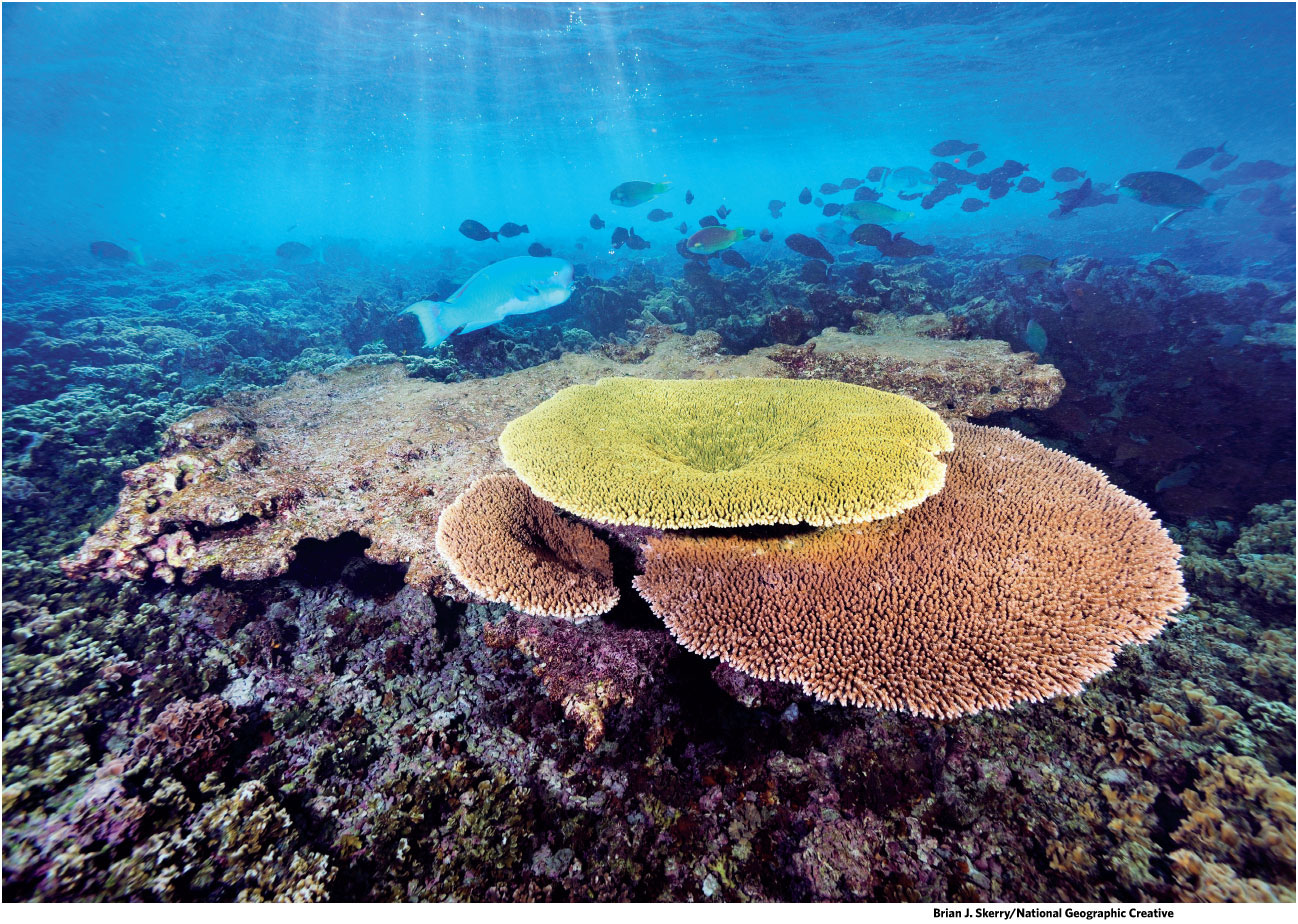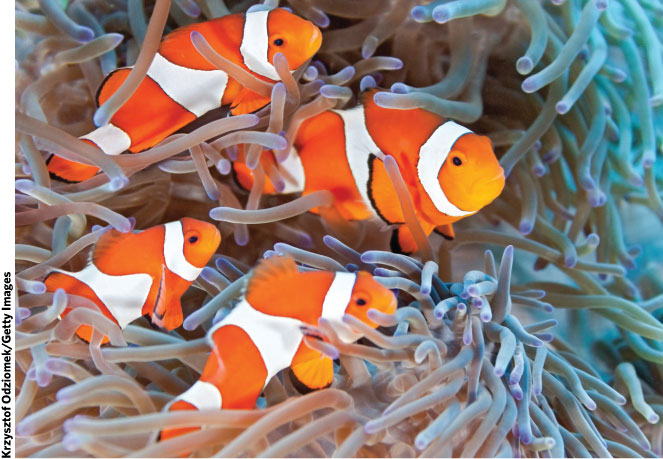Reducing the threats to oceans requires a multi-pronged approach.
Scientists have been working to create marine protected areas (MPAs)—places where fishing and other human activities are restricted or completely prohibited (see Lauchpad Chapter 31). Evidence shows that in the right conditions, MPAs can significantly improve the marine ecosystems they encompass. Three years after a 2003 bleaching event that devastated the South Pacific coral reefs of the Republic of Kiribati’s Kanton Island,the area was declared an MPA (The Phoenix Islands Protected Area). Commercial fishing was prohibited in about 3% of the MPA, specifically the coastal areas surrounding the islands. By 2010, the reefs showed significant recovery. Credit is given to the community of fish: Because they were left as intact, undisturbed populations, the fish grazed on algae that would normally move in and prevent coral from recolonizing the area. Thanks to keeping the community connections intact, the reef appears to be well on its way to recovery, even after a serious bleaching event, showing the resiliency of intact ecosystems. Increased fishing pressure throughout the rest of the MPA spurred Kiribati to officially ban commercial fishing in the entire MPA in January 2015.
KEY CONCEPT 29.9
Addressing threats to ocean ecosystems involves reducing the threatening actions and protecting degraded ecosystems to facilitate their recovery.
Of course, the best way to save the oceans may be to change the way we live on land. We humans now emit more than 30 billion metric tons of CO2 each year. Steps taken now to decrease the amount of CO2 released into the atmosphere will reduce the CO2 available to be absorbed by the oceans. Unfortunately, even if we stopped completely, right now, it would take tens of thousands of years for ocean chemistry to return to its preindustrial state. “We can’t reverse the tide at this point,” says Slattery. “But if we act quickly, we can at least slow it down.” TABLE 29.1


Which of these strategies do you think will be most effective at protecting ocean ecosystems?
Answers will vary and depend on the importance given to the benefit of the action and the cost (and therefore likelihood) of implementing it. It could be that regulations or treaties that address actions like the designation of areas as marine protected areas or that prohibit dangerous fishing practices would be the easiest to implement though actions that address the bigger problems of pollution or acidification would be more impactful.

On the last day of the mission, Slattery and his team ascended back up to the sunlit surface. Slattery did not remember the Sun being quite so bright. He was anxious to get back to his lab at the University of Mississippi, where he and his team would sort through the reams of data and samples, like detectives sorting through clues in an effort to solve a great mystery.
By the end of the mission, the team already knew that there were major differences in pH across the reef landscape, as hypothesized. After the data were analyzed and further experiments conducted, Slattery and his associates had evidence that acidification does indeed impact populations and has different effects on different species. But whether those differing conditions will have any long-term impact on individual reef species’ ability to survive in their new environments and what the effects will be on the coral reef community at large remain to be seen.
Select References:
Beman, J.M., et al. (2011). Global declines in oceanic nitrification rates as a consequence of ocean acidification. Proceedings of the National Academy of Sciences, 108(1): 208–213.
Hoegh-Guldberg, O., et al. (2007). Coral reefs under rapid climate change and ocean acidification. Science, 318(5857): 1737–1742.
Kline, A.K.R., et al. (2008). Ocean acidification causes bleaching and productivity loss in coral reef builders. Proceedings of the National Academy of Sciences, 105(45): 17442–17446.
Orr, J., et al. (2005). Anthropogenic ocean acidification over the twenty-first century and its impact on calcifying organisms. Nature, 437(7059): 681–686.
PERSONAL CHOICES THAT HELP
Marine ecosystems are vastly diverse, with many different aquatic habitats and an impressive array of species. Unfortunately, marine ecosystems are facing numerous threats due to human action. By bringing awareness to these threats and taking action to reduce negative human impacts, we can dramatically improve the health of our oceans.
Individual Steps
•Don’t leave trash on the beach, especially disposable plastic bags and bottles, as many of them end up in the ocean, where they are a danger to marine organisms.
•If you go diving or snorkeling on a coral reef, do not touch or remove any coral. Don’t drop the boat’s anchor on coral; instead, find a sandy spot to place it.
•Decrease your fossil fuel use. The less CO2 produced, the healthier the ocean will be.
Group Action
•Lead a book discussion on Oceana: Our Endangered Oceans and What We Can Do to Save Them by Ted Danson, which discusses many of the threats to the oceans and what we can do to help.
•Follow groups like the Coral Reef Alliance or Oceana on Facebook and Twitter to learn more about protecting marine ecosystems.
•Volunteer for the Great Annual Fish Count at http://fishcount.org to help survey reef fish species.
Policy Change
•Ask pet store owners and aquarium supply centers to sell only captive-bred fish to help protect coral reefs from being poisoned by cyanide.
•Contact your legislators and ask them to support legislation to reduce carbon emissions.
